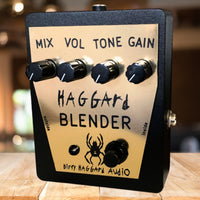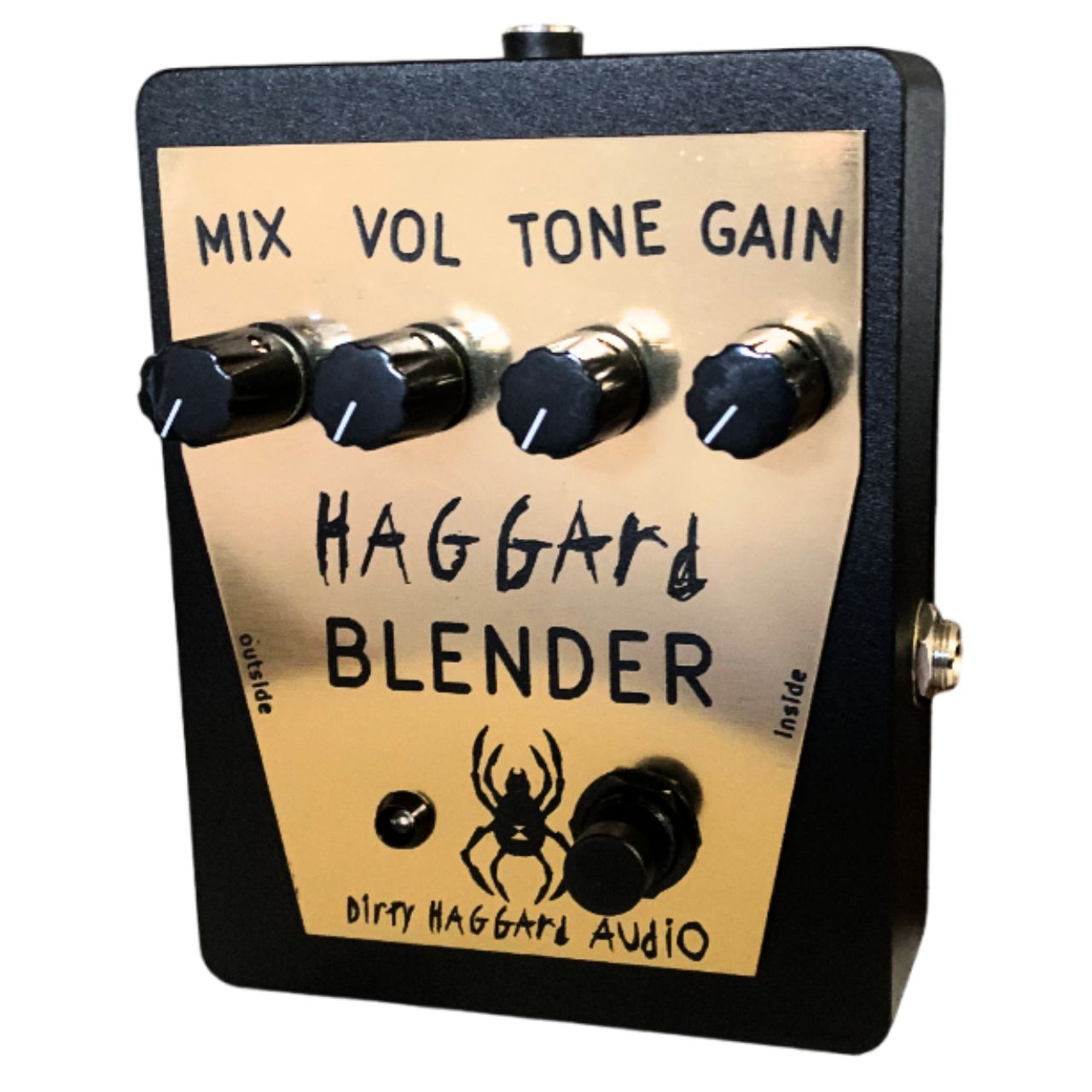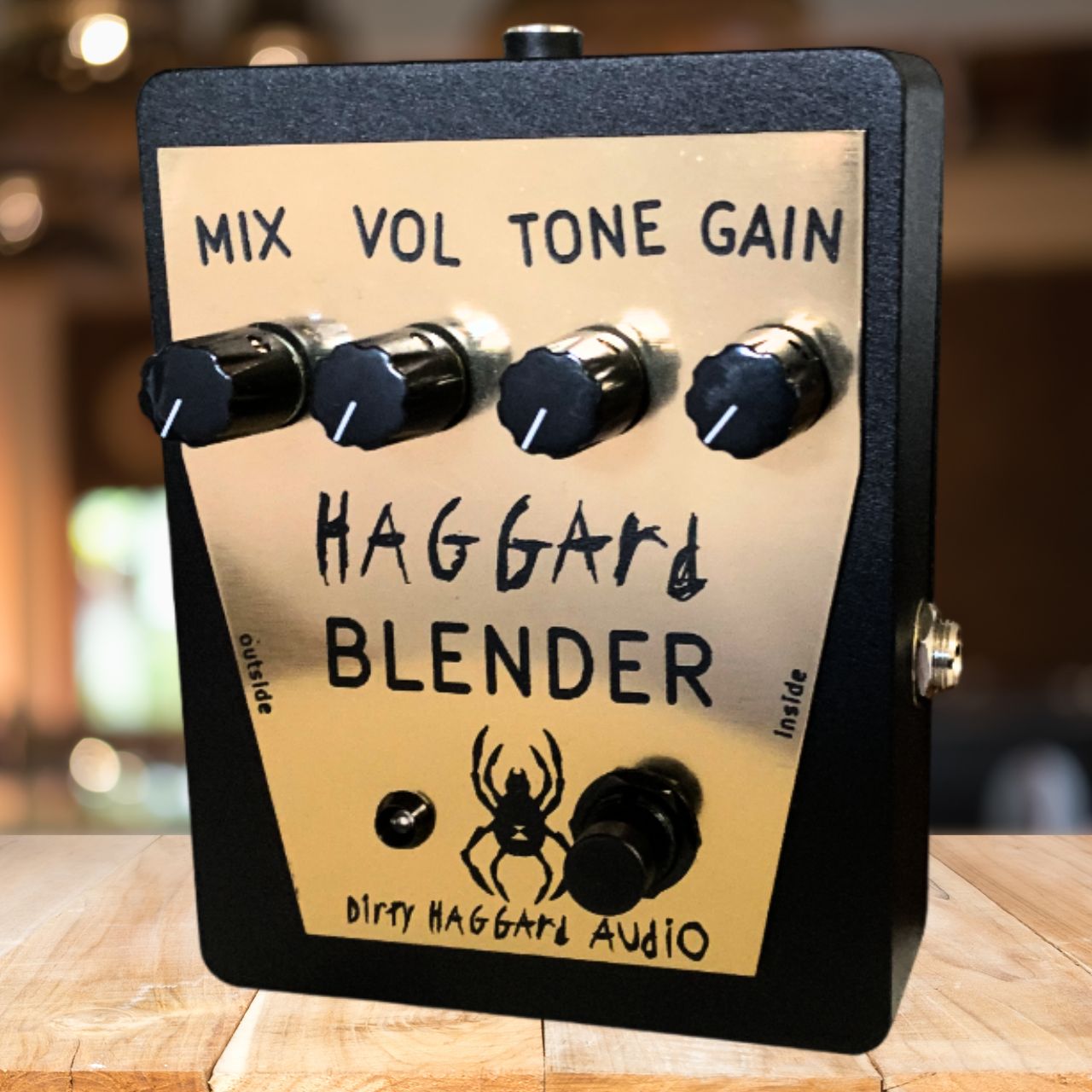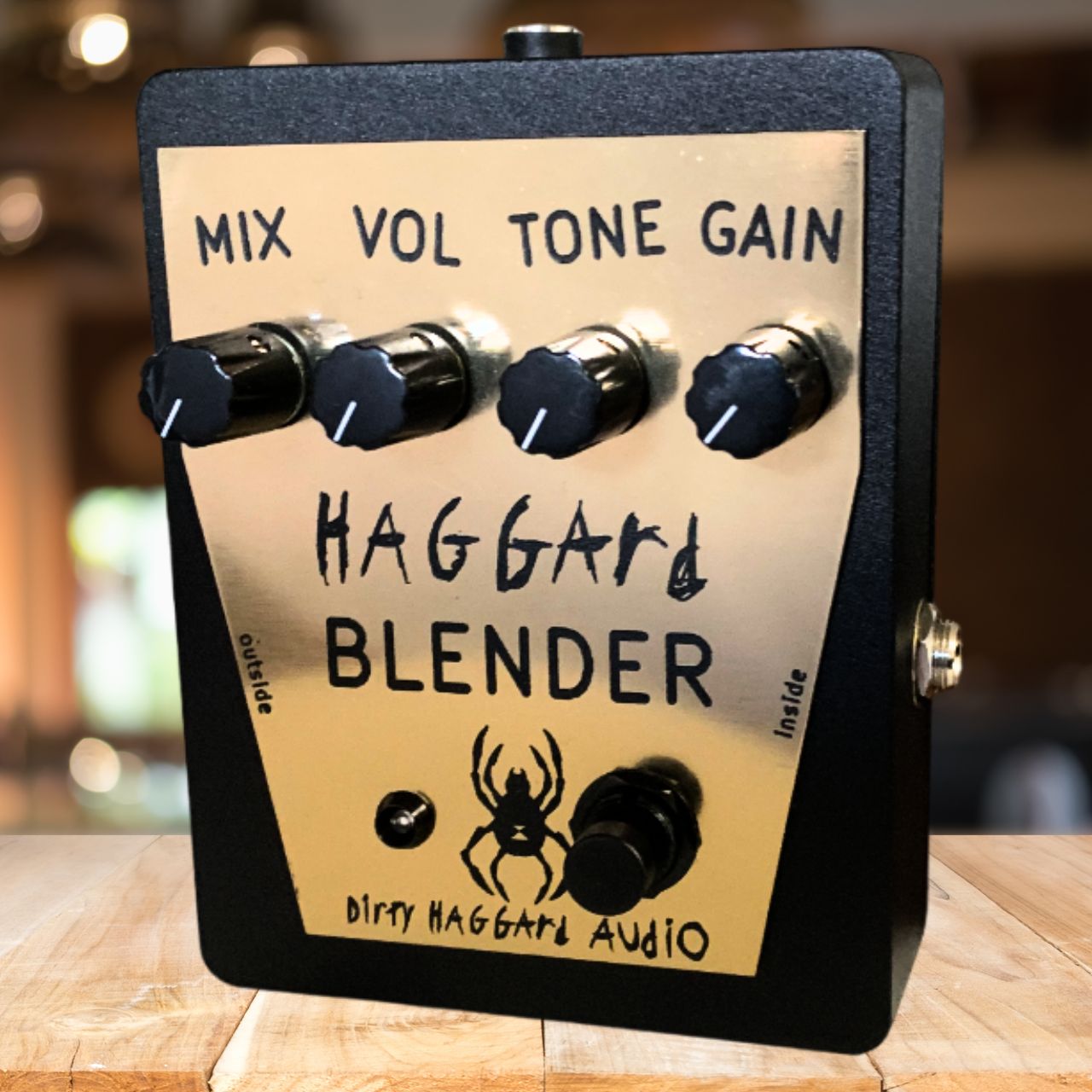Dirty Haggard Blender Pedal
The Haggard Blender uses the circuit that started DHA! I'm using the original circuit board design (my very first proper board layout) to recreate my favorite fuzz pedal.
Based on the Fender Blender, this circuit has a few key modifications: I omitted the 'boost' function, just as with my Arachnid (which I'll get to). I used 1N5819 diodes in the octave-generating section due to their extremely low forward voltage threshold, which gives maximum octave effect. I put BAT41 schottky diodes in the clipping section for their low-headroom aggressive clipping. I adjusted the tone circuitry to allow more high-frequencies through than the original and increased the amplitude of the clean-mix signal to be above unity!
Why would I make this one when I already made the Arachnid, a similar variant of this same design? Because this circuit is just too adjustable! Changing a few key parts here and there offers drastically different tones!
Unlike the Arachnid, which boosts some mids back into the signal, the Haggard Blender has a traditionally scooped midrange, which gives a more powerful 'punch' at the same volume level. It's got a tone control, which the Arachnid lacks, along with an adjustable volume for the fuzz circuit for maxmum tweakability with the blending of the clean/fuzz signals. Side by side, they're definitely of the same origin, but tonally, they're very distinct!
What's in the Box of the Dirty Haggard Blender Pedal?
- Dirty Haggard Blender Pedal
- Dirty Haggard Branded Pedal Box
- Random Dirty Haggard Sticker
- DeathCloud Merch
- Candy
More Fuzz Pedals from Dirty Haggard






